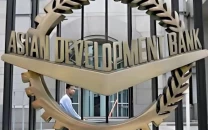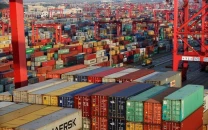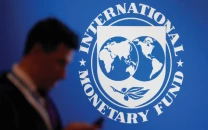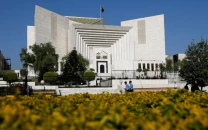Global financial fiasco: End of the age of US economic dominance
A look at why the US economy is on a one-way trip to disaster.

In the spring of 2008, the real estate bubble popped in the United States and it triggered a financial tsunami that engulfed the entire globe. This catastrophe provided an opportunity for change, change that was necessary to restructure the economic architecture of the US Despite the hefty promises made by President Obama during his election campaign, upon taking office he did the complete opposite of what was expected, or to be precise, hoped for, and succumbed, as his predecessors did, to the same interests that were responsible for the catastrophe.
Instead of seizing the opportunity, all policies implemented after 2008, were geared towards maintaining the status quo. These polices have exacerbated the magnitude of a crisis that will take effect anytime after 2012.
After the 1907 panic, influential bankers agreed to establish the Federal Reserve by 1914. The Fed is a “private” central bank that controls U.S monetary policy, acts as the lender of last resort and its shareholders consists of corporate banks. In addition, it is excluded from independent audits and congressional oversight. The monetary policy of the Fed is the core factor why the US economy is currently on an unsustainable path.
The Fed currently holds fractional reserve at 10%. For example, when ‘Bank ABC’ borrows $10,000 from the Fed it deposits $1,000 and is able to loan out $9,000. Let say that $9,000 is then loaned out to an individual who needs a car. After purchasing the car, the $9,000 is transferred to the seller and deposited in Bank ‘XYZ’. Under a 10% fractional reserve, ‘Bank XYZ’ deposits $900 and is able to loan out $8,100. In total, banks combined lend out $17,100 with deposits of only $1,900.This policy benefits lenders handsomely whereas the savers are at risk. In addition, systematic risk increases significantly when the investment arm of the bank is included that speculates on derivatives with a leverage of 40:1on capital. Currently, the total aggregate derivates market is 12 times of global GDP at $701 trillion traded by a handful of corporate banks.
And then we have the FIAT System. In 1963 the Fed abolished the gold/silver standard and violated the US constitution (Article 1, Section 10) that prohibited states from using anything other than gold and silver for the repayment of debts. An elastic money supply known as the FIAT system was established in which currency could be created without restraint (gold reserves). This system does not constitute any cost or liability to the issuer, only to the borrower. The fractional reserve principle combined with an elastic money supply primarily benefits the financial sector as they are on the top of money issuing pyramid.
Artificially low interest rates
The Federal reserve uses credit inflation to prop up the FIRE (Finance, Insurance and Real Estate) economy. Cheap credit creates both an artificial demand and misleading price signals, for example, before the 2008 collapse, due to cheap credit flooding into the housing market, housing price kept rising creating a false perception of an improvement in the economic and productive environment causing an overinvestment in the industry. Speculators on Wall Street profiteered from this asset price inflation. The economy didn’t.
A prolonged low interest rate policy discourages and diminishes savings. Savings are vital for capital formation that will be invested in the future. Since the FIRE economy took off in the 1970’s, the US saving rate has declined rapidly whereas the debt culture has grown exponentially.
Special interest capturing politics
The FIRE economy is, by far, the largest spender when it comes to shaping US Politics. It has contributed over $1.9 Billion since the 1990’s in political affairs, which includes donations to President Obama. Through intense lobbying it has managed to deregulate the market by repealing the Glass-Steagall Act and push the Commodity Futures Modernization Act of 2000 into law.
The modern economic philosophy needs to go back to the classical view which states:
Finance cannot substitute production. The productive (manufacturing & export) is the real economy and should be at the forefront, not the FIRE economy. Credit cannot replace savings. Speculation is not the same as sound investment. Issuing more debt is not the solution to grow out of existing debt.
The writer is a freelance journalist and works for Muffathalle
Published in The Express Tribune, January 2nd, 2012.



















COMMENTS
Comments are moderated and generally will be posted if they are on-topic and not abusive.
For more information, please see our Comments FAQ